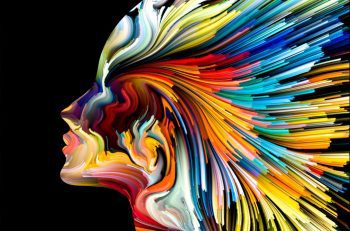Summary: Whether you realize it or not, creative thinking is something even the most conventional thinkers engage in every day. Researchers say creativity can be enhanced by reinterpreting frustrating situations.
Source: The Conversation
Do you think that creativity is an innate gift? Think again.
Many people believe that creative thinking is difficult – that the ability to come up with ideas in novel and interesting ways graces only some talented individuals and not most others.
The media often portrays creatives as those with quirky personalities and unique talent. Researchers have also identified numerous personality traits that are associated with creativity, such as openness to new experiences, ideas and perspectives.
Together, they seem to paint a dire picture for those who consider themselves conventional thinkers, as well as those who do not work in creative occupations – including roles that are often considered traditional and noncreative, such as accountants and data analysts.
These beliefs miss a key part of how creativity actually works in your brain: Creative thinking is actually something you engage in every day, whether you realize it or not.
Moreover, creativity is a skill that can be strengthened. This matters even for people who don’t consider themselves creative or who aren’t in creative fields.
In research that I recently published with organization and management scholars Chris Bauman and Maia Young, we found that simply reinterpreting a frustrating situation can enhance the creativity of conventional thinkers.
Using creative thinking to cope with emotions
Creativity is often defined as the generation of ideas or insights that are novel and useful. That is, creative thoughts are original and unexpected, but also feasible and useful.
Everyday examples of creativity are plentiful: combining leftover food to make a tasty new dish, coming up with a new way to accomplish chores, mixing old outfits to create a new look.
Another way you do this is when you practice what’s called “emotional reappraisal” – viewing a situation through another lens to change your feelings. There is actually an element of creativity to this: You’re breaking away from your existing perspectives and assumptions and coming up with a new way of thinking.
Say you’re frustrated about a parking ticket. To alleviate the bad feelings, you can think of the fine as a learning moment.
If you’re anxious about a presentation for work, you can cope with the anxiety by framing it as an opportunity to share ideas, rather than as a high-stakes performance that could result in demotion if handled poorly.
And if you’re angry that someone seemed unnecessarily combative in a conversation, you might reevaluate the situation, coming to view the behavior as unintentional rather than malicious.
Training your creative muscles
To test the link between creative thinking and emotional reappraisal, we surveyed 279 people. Those who ranked higher on creativity tended to reappraise emotional events more often in their daily life.
Inspired by the link between emotional reappraisal and creative thinking, we wanted to see whether we could use this insight to develop ways to help people be more creative. In other words, could emotional reappraisal be practiced by people in order to train their creative muscles?
We ran two experiments in which two new samples of participants – 512 in total – encountered scenarios designed to provoke an emotional response. We tasked them with using one of three approaches to manage their emotions.
We told some participants to suppress their emotional response, others to think about something else to distract themselves and the last group to reappraise the situation by looking at it through a different lens. Some participants were also given no instructions on how to manage their feelings.
In a seemingly unrelated task that followed, we asked the participants to come up with creative ideas to solve a problem at work.

In the experiments, conventional thinkers who tried reappraisal came up with ideas that were more creative than other conventional thinkers who used suppression, distraction or received no instructions at all.
Cultivating flexible thinking
Negative emotions are inevitable in work and life. Yet people often hide their negative feelings from others, or use distraction to avoid thinking about their frustrations.
Our findings have implications for how managers can think about how to best leverage the skills of their workers. Managers commonly slot job candidates into creative and noncreative jobs based on cues that signal creative potential.
Not only are these cues shaky predictors of performance, but this hiring practice may also limit managers’ access to employees whose knowledge and experience can play major roles in generating creative outcomes.
The result is that the creative potential of a significant part of the workforce may be underutilized. Our findings suggest that supervisors can develop training and interventions to cultivate creativity in their employees – even for those who might not seem predisposed to creativity.
Our research also indicates that people can practice flexible thinking every day when they experience negative emotions. Although people may not always have control over the external circumstances, they do have the liberty to choose how to cope with emotional situations – and they can do so in ways that facilitate their productivity and well-being.









